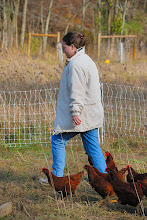My Hero, the Master of Google-Fu
I've been tracking down out-of-print books from my childhood. Usually I only remember some of the plot, not the title or author. With the help of google, I had compiled a nearly comprehensive list of books that I wanted:
Balch, Glenn: Little Hawk and the Free Horses (Little Hawk must tame a band of mustangs to save his tribe from the white men and the Apaches. Probably incredibly not PC now, but one of my favorites when I was a kid.)
Bell, Thelma: Captain Ghost (A mysterious man teaches several children how to turn a fallen tree into a sailing ship.)
Brock, Betty: The Shades (People's shadows live lives of their own in an enchanted garden.)
Nash, Mary: Mrs. Coverlet's Magicians (When the three children don't like their new nanny, the youngest turns to magic.)
Still, there was one book that I had treasured that I could find no trace of. I remembered the title as "The Queen Bee, and Other Stories." It was a collection of nature fables that were rather twisted. Unfortunately, all of the keywords I could think of were not specific enough to find it on google.
A few days ago I was telling Corvus about the stories in this book. He also writes fables that tend to be twisted, so he was very interested. He rose to the challenge and applied his google-fu to the problem.
And, believe it or not, he found it. The book I remembered was The Spider and Other Stories by Carl Ewald, not "The Queen Bee." He also found the complete text for the story "The Queen Bee" in The Junior Classics, Volume 8, verifying that this was indeed the author we wanted.
by Carl Ewald, not "The Queen Bee." He also found the complete text for the story "The Queen Bee" in The Junior Classics, Volume 8, verifying that this was indeed the author we wanted.
I'm looking forward to finally getting my hands on this book that I've remembered for so long.
Balch, Glenn: Little Hawk and the Free Horses (Little Hawk must tame a band of mustangs to save his tribe from the white men and the Apaches. Probably incredibly not PC now, but one of my favorites when I was a kid.)
Bell, Thelma: Captain Ghost (A mysterious man teaches several children how to turn a fallen tree into a sailing ship.)
Brock, Betty: The Shades (People's shadows live lives of their own in an enchanted garden.)
Nash, Mary: Mrs. Coverlet's Magicians (When the three children don't like their new nanny, the youngest turns to magic.)
Still, there was one book that I had treasured that I could find no trace of. I remembered the title as "The Queen Bee, and Other Stories." It was a collection of nature fables that were rather twisted. Unfortunately, all of the keywords I could think of were not specific enough to find it on google.
A few days ago I was telling Corvus about the stories in this book. He also writes fables that tend to be twisted, so he was very interested. He rose to the challenge and applied his google-fu to the problem.
And, believe it or not, he found it. The book I remembered was The Spider and Other Stories
I'm looking forward to finally getting my hands on this book that I've remembered for so long.

